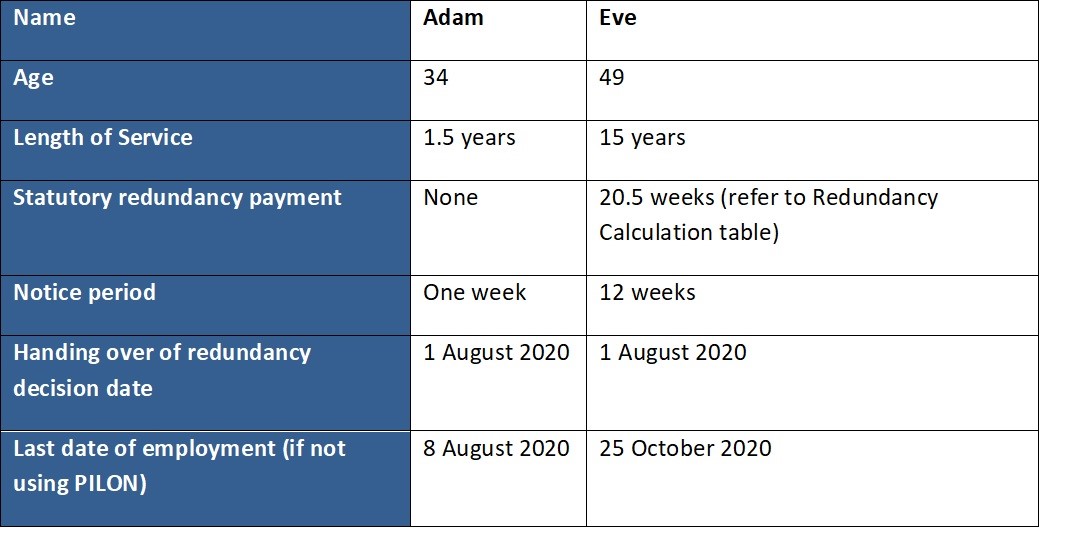Who Pays Redundancy Money? An In-depth Guide for Employers and Employees
Wiki Article
Discovering the Operational Dynamics of Firm Redundancy and Its Long-Term Sustainability

Redundancy Methods for Company Connection
In order to make certain continuous procedures, companies have to implement efficient redundancy strategies for company connection. Redundancy in this context describes the duplication of important components or functions within a system to alleviate the influence of potential failings. By including redundancy strategies, organizations can improve their strength versus disruptions brought on by numerous variables such as natural disasters, devices failings, or cyber-attacks.
One usual redundancy strategy is the implementation of backup systems and data storage services. This entails creating duplicates of vital information and systems that can be triggered in instance of a main system failing. Additionally, organizations can develop repetitive interaction networks and source of power to keep connectivity and procedures during unanticipated occasions.
Furthermore, cross-training workers to perform multiple functions within the business can work as a beneficial redundancy technique. This guarantees that vital jobs can still be executed even if crucial workers are not available as a result of ailment or other reasons. In general, effective redundancy methods are important for businesses to maintain functional connection and reduce the influence of potential interruptions.
Impact of Redundancy on Organizational Durability
Offered the important duty redundancy techniques play in making sure company continuity, exploring the effect of redundancy on business resilience comes to be important for understanding the holistic operational dynamics of a business. Redundancy, when strategically executed, can substantially contribute to enhancing an organization's strength in the face of unforeseen challenges.In addition, redundancy can bolster worker spirits and confidence, knowing that there are backup plans in location to address unexpected circumstances. This feeling of safety can result in enhanced efficiency and a more favorable workplace. Additionally, redundancy can promote development and imagination within an organization as staff members really feel encouraged to take calculated threats, understanding that there is a safeguard to support them in case of failure. Overall, the effect of redundancy on business strength is extensive, forming the long-term sustainability and success of a firm.
Stabilizing Performance and Flexibility in Redundancy
Attaining a harmonious stability between operational efficiency and adaptive flexibility is an essential difficulty in the tactical deployment of redundancy within organizations. Effective procedures are necessary for maintaining productivity and cost-effectiveness, guaranteeing that sources are utilized optimally. However, excessive focus on efficiency alone can result in rigidness, making it challenging for companies to adjust to unanticipated changes or obstacles. On the other hand, adaptability enables organizations to react nimbly to developing scenarios, fostering development and resilience. Yet, too much flexibility without a solid functional structure can result in inefficiencies and inconsistency.To stabilize effectiveness and adaptability in redundancy planning, companies must thoroughly examine their functional requirements, market dynamics, and critical objectives. Ultimately, discovering the ideal balance in between efficiency and flexibility is vital for building a sustainable and durable company in the face of unpredictability.
Long-Term Sustainability Through Redundancy Planning
To make sure enduring practicality and stability, organizations should strategically straighten their redundancy planning with long-term sustainability goals, therefore balancing operational effectiveness with adaptive flexibility. Business ought to view redundancy not as a reactive service to instant troubles yet as a positive approach for long-term success.
Proactive Measures for Sustainable Business Procedures
have a peek at this site How can business proactively boost their operational sustainability for long-term success? Carrying out positive procedures is important for companies aiming to guarantee sustainable operations. One key approach is to purchase modern technology and technology to improve processes, minimize waste, and stay affordable out there. Embracing sustainable practices such as minimizing power intake, decreasing carbon footprint, and enhancing resource usage can not just profit the environment yet also bring about set you back financial savings in the lengthy run.Additionally, fostering a culture of continual renovation and understanding within the organization can enhance adaptability to changing market conditions and customer needs. Encouraging staff member participation in decision-making procedures and giving possibilities for specialist growth can boost morale, productivity, and total performance. Developing clear objectives, keeping track of essential efficiency indicators, and consistently evaluating progression are vital components of proactive sustainability administration.
Teaming up with suppliers, customers, and other stakeholders to advertise sustainable methods throughout the supply chain can produce a causal sequence of positive influence - redundancy pay if company goes bust. By taking proactive actions in the direction of functional sustainability, firms can develop durability, drive advancement, visit this web-site and safeguard their lasting success in an ever-evolving service landscape
Conclusion

In the world of business monitoring, the critical release of company redundancy stands as a pivotal yet elaborate technique that necessitates a fragile equilibrium in between operational performance and long-lasting feasibility. By studying the functional dynamics that underpin company redundancy and reviewing its broader implications for business resilience and flexibility, a nuanced understanding of how redundancy methods can shape the future trajectory of a company begins to unravel.Offered the critical function redundancy methods play in making certain service continuity, checking out the influence of redundancy on business resilience ends up being vital for recognizing the all see here natural operational dynamics of a business. On the whole, the effect of redundancy on business durability is profound, shaping the long-lasting sustainability and success of a firm.
In final thought, recognizing the operational characteristics of business redundancy is essential for ensuring lasting sustainability.
Report this wiki page